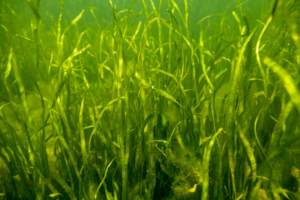 April brought its traditional showers and some very good news for the Chesapeake Bay region. For the first time since the decades-old underwater grass monitoring program began, underwater grass acreage exceeded 100,000 acres.
April brought its traditional showers and some very good news for the Chesapeake Bay region. For the first time since the decades-old underwater grass monitoring program began, underwater grass acreage exceeded 100,000 acres.
In 2017, the Virginia Institute of Marine Science mapped an estimated 104,843 acres of underwater grass throughout the Chesapeake Bay. This marks the third consecutive year of increasing acreage since the annual monitoring program began in 1984. This total exceeds the 2017 Chesapeake Bay Program’s restoration target by almost 15,000 acres.
According to the Chesapeake Bay Program, “Experts attribute this rise in underwater grass abundance to a strong increase in the very salty, moderately salty and tidal fresh regions of the Bay. The very salty regions of the Bay saw a sustained recovery of eelgrass, while the moderately salty regions of the Bay saw a continued increase in widgeon grass. Because widgeon grass is a “boom and bust” species whose abundance can rise and fall from year to year, a widgeon-dominant spike is not guaranteed to persist in future seasons. The wild celery, water stargrass and other species that have returned and reached new parts of the tidal fresh region of the Bay are less susceptible to rapid fluctuations in abundance.
As discussed in another article in this edition of our newsletter, underwater grasses are sensitive to pollution but quick to respond to water quality improvements, therefore their abundance is a good indicator of Bay health. Lefcheck et al. link the resurgence of underwater grasses to the nutrient reductions made under the Environmental Protection Agency’s Chesapeake Bay Total Maximum Daily Load, indicating that this “pollution diet” and local conservation incentives have resulted in a healthier Chesapeake Bay.
For more information, read the Chesapeake Bay Program’s full press release on the restoration success.
